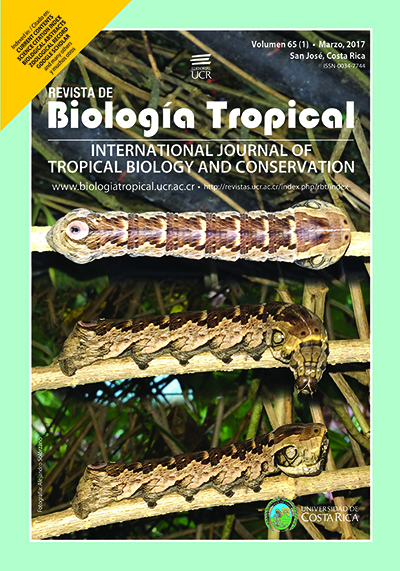Abstract
The assessment of the preclinical neutralizing ability of antivenoms in Latin America is necessary to determine their scope of efficacy. This study was aimed at analyzing the neutralizing efficacy of a polyspecific bothropic-crotalic antivenom manufactured by BIRMEX in Mexico against lethal, hemorrhagic, defibrinogenating and in vitro coagulant activities of the venoms of Bothrops jararaca (Brazil), B. atrox (Perú and Colombia), B. diporus (Argentina), B. mattogrossensis (Bolivia), and B. asper (Costa Rica). Standard laboratory tests to determine these activities were used. In agreement with previous studies with bothropic antivenoms in Latin America, a pattern of cross-neutralization of heterologous venoms was observed. However, the antivenom had low neutralizing potency against defibrinogenating effect of the venoms of B. atrox (Colombia) and B. asper (Costa Rica), and failed to neutralize the in vitro coagulant activity of the venom of B. asper (Costa Rica) at the highest antivenom/venom ratio tested. It is concluded that, with the exception of coagulant and defibrinogenating activities of B. asper (Costa Rica) venom, this antivenom neutralizes toxic effects of various Bothrops sp venoms. Future studies are necessary to assess the efficacy of this antivenom against other viperid venoms.
References
Bogarín, G., Morais, J. F., Yamaguchi, I. K., Stephano, M. A., Marcelino, J. R., Nishikawa, A. K., Guidolin, R., Rojas, G., Higashi, H. G., & Gutiérrez, J. M. (2000). Neutralization of crotaline snake venoms from Central and South America by antivenoms produced in Brazil and Costa Rica. Toxicon, 38, 1429-1441.
Campbell, J. A., & Lamar, W. W. (2004). The Venomous Reptiles of the Western Hemisphere. Ithaca: Cornell University Press.
Cardoso, D. F., Yamaguchi, I. K., & Moura da Silva, A. M. (2009). Produçao de soros antitoxinas e perspectivas de modernizaçao por técnicas de biología molecular. In J. L. C. Cardoso, F. O. S. França, F. H. Wen, C. M. S. Málaque, & V. Haddad (Eds.), Animais peçonhentos no Brasil. Biologia, clínica e terapêutica dos acidentes (2ª Ed., pp. 419-431). Sao Paulo: Sarvier.
de Roodt, A. R., Dolab, J. A., Fernández, T., Segre, L., & Hajos, S. E. (1998). Cross-reactivity and heterologous neutralization of crotaline antivenoms used in Argentina. Toxicon, 36, 1025-1038.
Fan, H. W., & Cardoso, J. L. (1995) Clinical toxicology of snake bites in South America. In J. Meier & J. White (Eds.), Handbook of clinical toxicology of animal venoms and poisons (pp. 667-688). Boca Raton: CRC Press.
Finney, D. J. (1971). Probit analysis. Cambridge: Cambridge University Press.
França, F. O. S., & Málaque, C. M. S. (2009). Acidente botrópico. In J. L. C. Cardoso, F. O. S. França, F. H. Wen, C. M. S. Málaque, & V. Haddad (Eds.), Animais peçonhentos no Brasil. Biologia, clínica e terapéutica dos accidentes (2ª Ed., pp. 81-95). Sao Paulo: Sarvier.
Gené, J. A., Roy, A., Rojas, G., Gutiérrez, J. M., & Cerdas, L. (1989). Comparative study on coagulant, defibrinating, fibrinolytic and fibrinogenolytic activities of Costa Rican crotaline snake venoms and their neutralization by a polyvalent antivenom. Toxicon, 27, 841-848.
Gutiérrez, J. M. (2010). Snakebite envenomation in Central America. In S. P. Mackessy (Ed.), Handbook of venoms and toxins of reptiles (pp. 491-507). Boca Raton: CRC Press.
Gutiérrez, J. M. (2014). Reducing the impact of snakebite envenoming in Latin America and the Caribbean: achievements and challenges ahead. Transactions of the Royal Society of Tropical Medicine and Hygiene, 108, 530-537.
Gutiérrez, J. M., Higashi, H. G., Wen, F. H., & Burnouf, T. (2007). Strengthening antivenom production in Central and South American public laboratories: report of a workshop. Toxicon, 49, 30-35.
Gutiérrez, J. M., Rojas, G., Bogarín, G., & Lomonte, B. (1996). Evaluation of the neutralizing ability of antivenoms for the treatment of snake bite envenoming in Central America. In C. Bon & M. Goyffon (Eds.), Envenomings and their treatment (pp. 223-231). Lyon: Fondation Marcel Mérieux.
Gutiérrez, J. M., Rojas, G., Lomonte, B., Gené, J. A., Chaves, F., Alvarado, J., & Rojas, E. (1990). Standardization of assays for testing the neutralizing ability of antivenoms. Toxicon, 28, 1127-1129.
Otero, R., Núñez, V., Osorio, R. G., Gutiérrez, J. M., Giraldo, C. A., & Posada, L. E. (1995). Ability of six Latin American antivenoms to neutralize the venom of mapaná equis (Bothrops atrox) from Antioquia and Chocó (Colombia). Toxicon, 33, 809-815.
Otero-Patiño, R. (2009). Epidemiological, clinical and therapeutic aspects of Bothrops asper bites. Toxicon, 54, 998-1011.
Pope, C. G. (1939). The action of proteolytic enzymes on the antitoxins and proteins in immune sera. I. True digestión of the proteins. British Journal of Experimental Pathology, 20, 132-149.
Segura, Á., Castillo, M. C., Núñez, V., Yarlequé, A., Gonçalves, L. R. C., Villalta, M., Bonilla, C., Herrera, M., Vargas, M., Fernández, M., Yano, M. Y., Araújo, H. P., Boller, M. A., León, P., Tintaya, B., Sano-Martins, I. S., Gómez, A., Fernández, G. P., Geoghegan, P., Higashi, H. G., León, G., & Gutiérrez, J. M. (2010). Preclinical assessment of the neutralizing capacity of antivenoms produced in six Latin American countries against medically-relevant Bothrops snake venoms. Toxicon, 56, 980-989.
Segura, Á., Herrera, M., Villalta, M., Vargas, M., Uscanga-Reynell, A., Ponce de León-Rosales, S., Jiménez-Corona, M. E., Reta-Mares, J. F., Gutiérrez, J. M., & León, G. (2012). Venom of Bothrops asper from Mexico and Costa Rica: Intraspecific variation and cross-neutralization by antivenoms. Toxicon, 59, 158-162.
Warrell, D. A. (2004) Snakebites in Central and South America: Epidemiology, clinical features, and clinical management. In J. A. Campbell & W. W. Lamar (Eds.), The venomous reptiles of the Western Hemisphere (Vol I, pp. 709-761). Ithaca: Cornell University Press.
##plugins.facebook.comentarios##

This work is licensed under a Creative Commons Attribution 4.0 International License.
Copyright (c) 2017 Revista de Biología Tropical







